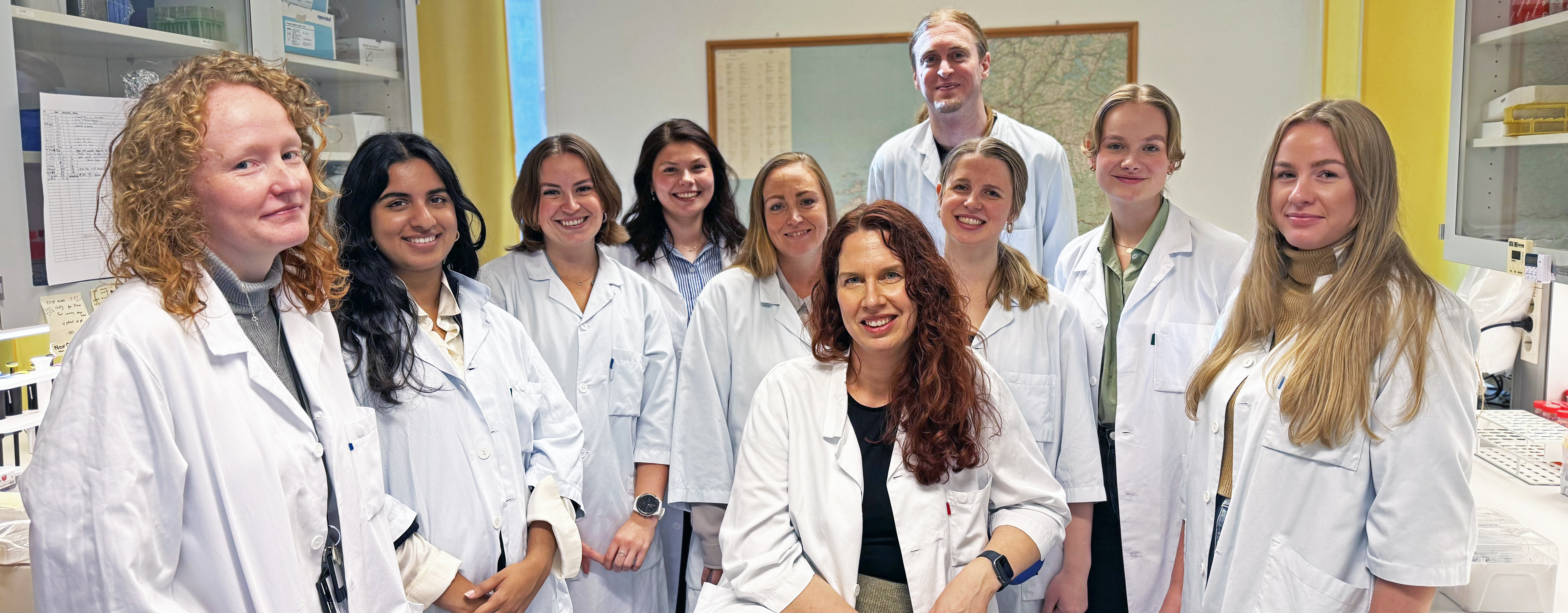Neurobiology Laboratory

The Neurobiological laboratory is a joint venture of the Department of Neurology and Clinical Neurophysiology, St. Olavs Hospital, and Department for Neuromedicine and Movement Science (INB), NTNU, to build a bridge between clinical and basic research in neuroscience.
The activities are divided into two main aspects (i) clinical and basic research within neuroscience and (ii) laboratory services for clinical studies undertaken at the clinic of neurology, St. Olavs hospital.
The Neurobiological lab is also housing the General Neurological Research Biobank (REK 21725).

Research
Oxidative stress plays an important role in brain aging and neurodegenerative conditions. Genomic DNA is particularly vulnerable to oxidative stress, thus preserving genomic integrity is a key for brain health. Base excision repair (BER) is the major pathway for removal of damaged bases and initiated by DNA glycosylases. Based on our work and others, it appears that processing of oxidized base lesions to avoid DNA mutations is not the sole function of DNA glycosylases. Instead, we propose an epigenetic-like function of oxidative base lesions and DNA glycosylases as modifiers of the epigenetic landscape in brain.
To uncover novel molecular mechanisms of genome regulation that are important for brain function during health and disease, we are using a multidisciplinary approach combining state-of-the-art human cell reprogramming technologies such as iPSC-brain organoid differentiation and direct neuronal conversion, as well as mouse genetics with next-generation sequencing of the epigenetic and oxidative landscape and functional neuroscience.
Neurodegenerative diseases are characterized by a progressive loss of structure and function of neurons in the central nervous system ultimately resulting in cell death. Common neurodegenerative diseases include Alzheimer’s disease (AD), Parkinson’s disease (PD), amyotrophic lateral sclerosis (ALS), and multiple sclerosis (MS). To date, no treatment is available to halt or reverse the underlying disease progression and clinical diagnosis is still challenging often only definite after autopsy.
The Trønderbrain project aims to understand molecular processes that drive the initiation and progression of neurodegenerative diseases with special emphasis on AD. The overall goal is to identify novel biomarkers for early diagnosis and targets for effective therapy.
For more information visit the Trønderbrain homepage here.
Service
The Neurobiological laboratory offers research infrastructure such as laboratory equipment, storage space and technical personnel to provide support for collection, processing and biobanking of biological material at the Neurology clinic.
Lab Members

We are always looking for skilled and motivated students to support our research. Please get in contact with us to learn more about potential projects.
Contact info
Visiting address
Nevrosenteret Øst, 2nd floor
St.Olavs Hospital
Edvard Griegs gate 8,
7030 Trondheim
Recent publications
Full list of publications can be found here.
Neurauter CG et al. (2024). Enhanced glutathione levels confer resistance to apoptotic and ferroptotic programmed cell death in NEIL DNA glycosylase deficient HAP1 cells. Free Radical Biology & Medicine, online
Grøntvedt GR et al. (2022). Association of Klotho Protein Levels and KL-VS Heterozygosity With Alzheimer Disease and Amyloid and Tau Burden. JAMA Network Open, 5(11):e2243232.
Tari AR et al. (2022). Safety and efficacy of plasma transfusion from exercise-trained donors in patients with early Alzheimer’s disease: protocol for the ExPlas study. BMJ Open, 12 (9) e056964.
Egiazarian M et al. (2022). Age- and sex-dependent effects of DNA glycosylase Neil3 on amyloid pathology, adult neurogenesis, and memory in a mouse model of Alzheimer′s disease. Free Radical Biology & Medicine, 193(Pt 2):685-693.
Hildrestrand GA, Rolseth V, Kunath N et al. (2021). NEIL1 and NEIL2 DNA glycosylases modulate anxiety and learning in a cooperative manner in mice. Communications biology, 4(1):1354.
Quiles-Jiménez A et al. (2021). DNA glycosylase Neil3 regulates vascular smooth muscle cell biology during atherosclerosis development. Atherosclerosis, 324:123-132
Farooq A et al. (2020). HMST-Seq-Analyzer: A new python tool for differential methylation and hydroxymethylation analysis in various DNA methylation sequencing data. Computational and Structural Biotechnology Journal, 18:2877-2889
Scheffler K et al. (2020). DNA glycosylase Neil2 contributes to genomic responses in the spleen during clinical prion disease. Free Radical Biology & Medicine, 152:348-354.
Scheffler K, Bjørås KØ, Bjørås M (2019). Diverse functions of DNA glycosylases processing oxidative base lesions in brain. DNA repair, 8:102665.
Ystgaard MB et al. (2019). Neuromodulatory Effect of NLRP3 and ASC in Neonatal Hypoxic Ischemic Encephalopathy. Neonatology, 115(4):355-362.
